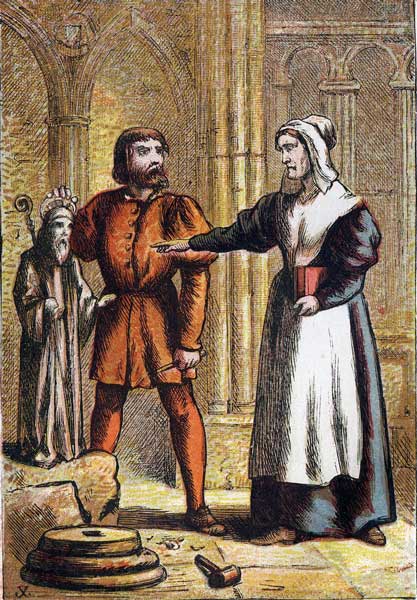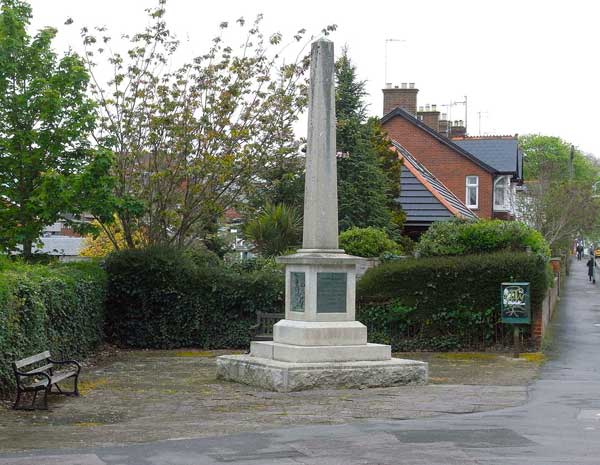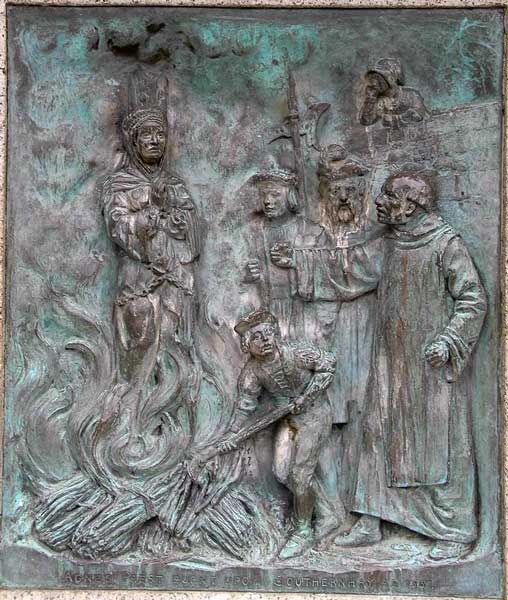taken from extracts from John Fox’s Acts and Monuments of Martyrs 2 vols. 1641.

During the reign of Queen Mary, she had decreed that Mass should be said in all churches. Failure to obey the Queens command was regarded as rebellion against the Crown. The penalty was to be hung, sent to prison or burnt at the stake.
It was during Queen Mary’s reign that the story of Agnes Prest comes to the fore. Agnes was originally from Cornwall, being born in 1503, but lived for a short time in Exeter as a servant. She had been brought up as a Romanist, but converted to Protestantism. She returned to Launceston where she married Prest. They made the living spinning whilst residing at Northcott Hamlet, Boyton. Agnes was known to be a cheerful, patient, sober and hard working woman. Although uneducated, she knew the Bible of by heart. Her strong conviction to her religion caused a serious breakdown in her relationship with her husband who was a Roman Catholic. She attempted to convince him to change, without any success. The children of the marriage were brought up as Catholics, and Agnes herself, faced pressure to convert. Acting under instructions communicated in a vision, Agnes left home, they being, as she said, ‘idolaters with whom she could not associate.’ She supported herself by general labour and spinning, but before long, she was accused by her neighbours of heresy. They took Agnes to the parish priest accusing her of heresy. She was arrested and taken to Launceston Gaol where she spent several months incarcerated.
In the 4th week of Lent, 1555, Agnes, was indicted at Launceston for denying the Real Presence in the Sacrament of the Altar, and for saying that no Christian doth eat the Body of Christ carnally but spiritually. Before Judge Stanford, a true bill was found against her, and the petty jury also found her guilty and was handed over to Bishop Touberville of Exeter.
Upon being taken to Exeter, Agnes was accused of speaking against the sacrament of the Mass, and calling it idolatry. She admitted the fact, and refused to go back to join her husband and children, saying that she thought it her duty to stick to Christ. She was ordered to be confined in the Bishop’s prison, but, being found to be very quiet, the keeper of the prison, after a short interval, took her home to his own house, where she was employed in spinning and carding, and other work, and was allowed to go about the city as she pleased. Her husband was now sent for from Northcott, but she positively refused to return with him, saying that he was not only an idolator himself, but allowed her to have no peace because she was not one also.
She also faced continued pressure to change her views from the clergy, but Agnes continued to stand firm to her principles and rejected the overtures. She is said to have met a Dutch stonemason (depicted above) in Exeter Cathedral who was repairing the statues of the saints beloved of the Catholics. According to Fox, she said to him “What a madman art thou, to make them new noses, which within a few days shall all lose their heads”, at which point, through the efforts of Blackstone, the Bishops Chancellor, she was forcefully returned to custody. She was visited by Mr. Daniel, a preacher in Devon and Cornwall; the wife of Walter Rawley; William and John Kede; and many others, who all tried to convince her to change her position. At the conclusion of a period of time Agnes was brought from the Bishop’s prison to Exeter Guildhall before John Petrie, Mayor of Exeter, and in the presence of Bishop Touberville. Here she was called upon to give up her heretical opinions and go home with her husband. Utterly refusing to conform to the judge’s orders she was condemned to be burnt. And so on August 15th, 1557, Agnes was handed over to the Sheriff, she was taken outside the walls of the city to a place called Southernhay. Here she was tied to a stake, and again refusing to recant and be pardoned, she was cruelly burnt to death, whilst crying out, ‘God be merciful to me a sinner.’
In 1909 a memorial was erected in Denmark Road, Exeter, to Agnes Prest and Thomas Benet, known as the Exeter Martyrs. Thomas Benet died January 10, 1531 and it is believed that Agnes witnessed his execution.
This monument was designed by Harry Hems and was erected with money raised through public subscription. Two bronze sculpted relief panels by Harry Hems on the base of the obelisk depict Prest burning at the stake and Benet nailing his protest to the door of the Cathedral. The following inscriptions are contained on two bronze plaques affixed on opposite sides of the base:
“To the glory of God & in honour of his faithful witnesses who near this spot yielded their bodies to be burned for love to Christ and in vindication of the principles of the Protestant Reformation this monument was erected by public subscription AD 1909. They being dead yet speak”.



Visits: 128
